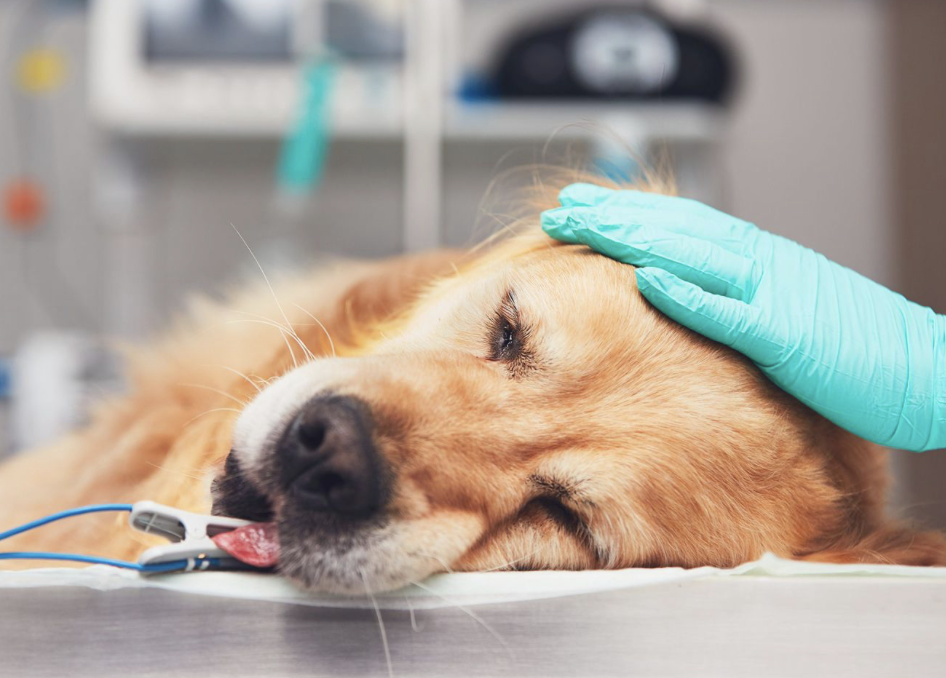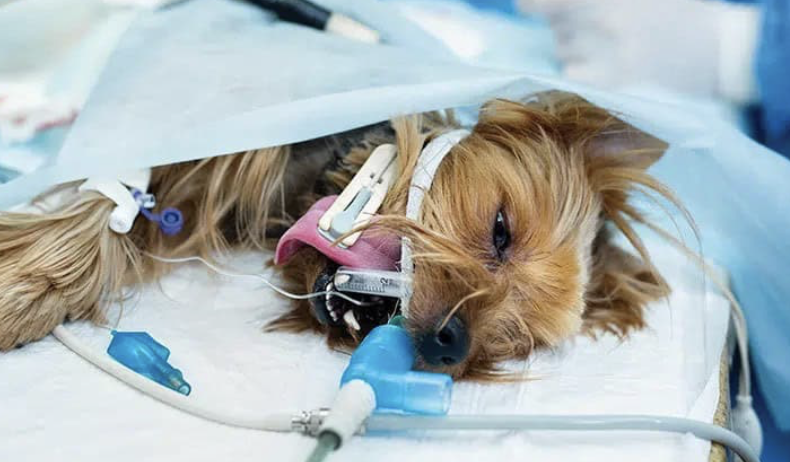
Click the blue text to follow us

Anesthesia is a critical aspect of many surgeries and examinations in pet medicine. Today, we will discuss the intravenous anesthetic agent used for dogs – Propofol (PropofolVet Multidose), helping pet owners gain a deeper understanding of this “behind-the-scenes hero” that protects the health of our furry friends.
What is PropofolVet Multidose?
PropofolVet Multidose is specifically designed for intravenous anesthesia in dogs. Each milliliter contains 10 mg of propofol, which is a sterile, pyrogen-free emulsion that is almost insoluble in water, resulting in a white oil-in-water emulsion.
In addition to propofol, it contains soybean oil, glycerin, benzyl alcohol, oleic acid, and lecithin. Soybean oil acts as a stable “carrier” for propofol, allowing it to function better within the dog’s body; glycerin helps maintain the osmotic pressure of the emulsion, ensuring stability in the internal and external environments of the dog’s cells; benzyl alcohol serves as a bacteriostatic agent to prevent bacterial growth in the vial; oleic acid and lecithin work together to stabilize the emulsion, preventing it from easily separating. Additionally, sodium hydroxide is used to adjust the pH, keeping it between 6.0 – 8.5, which minimizes irritation to the dog’s body.
What are the main effects of this drug?
Induction of Anesthesia
Before a dog undergoes surgery or examinations requiring anesthesia, injecting propofol allows the dog to quickly enter an anesthetic state. For example, during a spay surgery, when the veterinarian slowly injects propofol into the dog, the previously lively dog will quiet down and slowly close its eyes, allowing it to undergo surgery without pain.
Maintenance of Anesthesia
During surgery, if the procedure is relatively short, the veterinarian can maintain the dog in an anesthetic state by intermittently injecting propofol. For longer surgeries, inhalation anesthetics are used for maintenance, but propofol also plays an important role during this process. It helps the dog smoothly transition from induction anesthesia to inhalation maintenance, ensuring the dog remains calm throughout the surgery without suffering from unstable anesthesia.

Dosage and Administration
Induction Anesthesia Dosage
During induction anesthesia, the dosage should be carefully adjusted based on the dog’s response. When injecting propofol, it should be administered slowly, generally completed within 60 – 90 seconds, or the dog’s response can be observed; once clinical signs of anesthesia appear, such as muscle relaxation and loss of focus in the eyes, the injection can be stopped. It is important to note that if the injection is too fast, completed within 5 seconds, the dog may be at risk of respiratory arrest.
The induction dosage of propofol varies with different premedications. For healthy dogs not receiving premedication, the induction dosage is approximately 7.6 mg/kg; however, if benzodiazepines or opioids are used as premedication, the induction dosage can be reduced to 4.7 mg/kg. Additionally, for older dogs receiving premedication, the dosage can be further reduced due to their decreased physiological function and drug tolerance, necessitating more precise dosage control.
Maintenance Anesthesia Dosage
If intermittent injections of propofol are used to maintain anesthesia, the dosage for dogs not receiving premedication is generally 3.2 mg/kg; if benzodiazepines or opioids are used, the maintenance dosage is 1.7 mg/kg. Interestingly, repeated injections of the maintenance dosage do not prolong recovery time or affect the interval for the next injection, indicating that the anesthetic effect of propofol does not accumulate in the dog’s body.
If inhalation anesthetics are used to maintain anesthesia during surgery, due to the rapid metabolism of propofol in the dog’s body, a small additional dose of propofol may be needed to help the dog transition smoothly to the inhalation maintenance phase. Furthermore, when using inhalation anesthetics like isoflurane after propofol induction, the initial concentration may need to be slightly higher than when using barbiturates for induction, as dogs recover quickly from propofol anesthesia, and insufficient inhalation anesthetic concentration may cause the dog to wake up prematurely, affecting the smooth progress of the surgery.
Pharmacological Activity
Propofol is classified as an intravenous sedative-hypnotic agent specifically used for the induction and maintenance of anesthesia in dogs. Once propofol is injected intravenously, it is rapidly metabolized extensively in the liver. In the liver, propofol is converted into inactive conjugates, which are then excreted in the urine.
In terms of metabolism speed, propofol is eliminated from the dog’s body very quickly, typically allowing the dog to enter an anesthetic state within 65 – 120 seconds after the start of the injection. The dog also recovers quickly from propofol anesthesia, usually standing fully within 20 minutes. However, if certain medications, such as opioids or benzodiazepines, are used before anesthesia, or if inhalation anesthetics are used simultaneously, recovery time may be prolonged.
Precautions for Use
Pre-Use Checks
Before using propofol, an important step is to shake the vial very well. This is because propofol is an emulsion that may separate after being left for a period. If there is significant separation, a large amount of cream or aggregation, or if large droplets or particles appear, or if the solution changes color, that vial should not be used! These conditions indicate that the stability of the drug has been compromised, which may not only reduce its efficacy but also potentially harm the dog. However, if there is only slight separation after being left for a while, gently shaking it until it disappears is acceptable for normal use.
Strict Injection Protocol
Propofol should only be administered to dogs via intravenous injection! Throughout the procedure, strict aseptic principles must be followed. Just as doctors wear sterile gowns and gloves during human surgeries, veterinarians must also take various disinfection measures when injecting propofol into dogs. If aseptic techniques are not observed, bacteria may enter the dog’s body, leading to fever, infection, and in severe cases, life-threatening situations. Therefore, if there is any suspicion of contamination, even a slight doubt, the drug must not be administered to the dog.
Storage After Opening
Once the vial is opened, a 28-day “countdown” begins, and it must be used within 28 days. After opening, the “opening date” and “expiration date” must be marked on the vial. The opened vial should be stored at room temperature, and it should not be placed in the refrigerator! It is best to keep it in a covered container to prevent dust and other impurities from entering. Once the 28 days are up, regardless of how much drug remains in the vial, it must be discarded; it should not be used again.

Which Dogs Should Not Use It?
Allergic Reactions
If a dog is allergic to propofol or any of its components, propofol should not be used for anesthesia. Just as some people are allergic to penicillin and may experience severe allergic reactions, dogs allergic to propofol may exhibit rashes, difficulty breathing, or even severe allergic symptoms such as shock, which can be life-threatening.
Special Conditions
If a dog is not suitable for general anesthesia or sedation, such as those with severe cardiopulmonary diseases or liver and kidney dysfunction, propofol should not be used. This is because propofol may place additional burdens on these already compromised organs, worsening the dog’s condition. Therefore, before administering propofol, veterinarians will thoroughly review the dog’s medical history and conduct a comprehensive physical examination to ensure the dog can safely use this anesthetic.
What Adverse Reactions May Occur?
The most common side effect of propofol is respiratory depression, primarily manifested as rapid or paused breathing in dogs. Additionally, other less common side effects may occur.
Respiratory Issues: Dogs may experience difficulty breathing, appearing labored during respiration;
Cardiovascular Issues: Abnormal blood pressure may occur, such as hypotension or hypertension, and heart rate may also become abnormal, such as bradycardia (slow heart rate) or tachycardia (fast heart rate), and even arrhythmias may occur;
Muscle Issues: Dogs may experience muscle twitching or tension, and some may involuntarily move their limbs;
CNS Issues: Symptoms of excitement may occur, such as sudden agitation, or excessive sedation, resulting in lethargy;
Gastrointestinal Issues: Dogs may experience vomiting, retching, or drooling. However, these side effects do not occur in every dog, and in most cases, veterinarians have ways to manage them.
Images in this article | Source from PropofolVet Multidose related websites
References | PropofolVet Multidose instructions and others

Contact us on WeChat | VET-AM
Welcome to follow us for more information!
A platform focused on animal health and disease sharing
Welcome to follow and communicate!!!